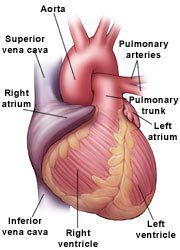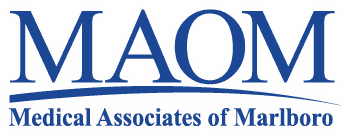Sudden Cardiac Death
Basic Facts
- Sudden cardiac death, also called sudden arrest or cardiac arrest, occurs when the heart stops beating.
- It is responsible for half of all heart disease deaths and results from a malfunction in the heart's electrical system.
- In individuals with abnormalities of the heart's electrical system, sudden cardiac arrest is prevented by medications and devices such as an implantable cardioverter defibrillator (ICD).

Because death occurs when the heart stops beating, the term sudden cardiac arrest, or sudden cardiac death, is used when an individual in apparent adequate health suffers sudden cessation of heartbeat.
Many sudden death victims have an underlying condition of which they were unaware prior to the incident. Up to 85 percent of patients hospitalized for cardiac arrest have a heart rhythm disorder called ventricular fibrillation (VF). During VF, the ventricles of the heart (the lower chambers) transmit erratic electrical impulses, which cause the heart to quiver rapidly instead of beating and pumping blood. This arrhythmia causes death if not treated immediately.
WHAT ARE THE SYMPTOMS?
Sudden cardiac death is often preceded by a ventricular arrhythmia. These arrhythmias include premature ventricular contractions and ventricular tachycardia, which can cause a racing heart, dizziness, or loss of consciousness.
CAUSES AND RISK FACTORS
The risk factors for sudden death include:
- Abnormal heart rhythms, especially ventricular arrhythmias;
- Previous heart attack;
- Diminished pumping capacity of the heart;
- Coronary artery disease;
- Structural heart disease; and
- Syncope.
DIAGNOSIS
Tests used to diagnose or assess the risk of sudden cardiac death include:
- Electrocardiogram (ECG);
- Echocardiogram;
- Arrhythmia monitoring; and
- Electrophysiology (EP) testing.
TREATMENT APPROACH
Sudden cardiac arrest is a medical emergency and treatment must be delivered within a few minutes. The first step is administration of cardiopulmonary resuscitation (CPR). As soon as equipment is available, electrical defibrillation shock should be administered. Survival is greatest when the first defibrillation shock is delivered within 3 minutes of collapse. In general, every minute of delay reduces the likelihood of survival by 10 percent. Because of this, devices called automatic external defibrillators, or AEDs, are now required on airplanes and deployed in airports, stadiums, shopping malls, casinos, and high-rise buildings.
Prevention
Treatment for sudden cardiac arrest also involves preventing episodes. Strategies include:
- Medication;
- Implantable cardiac defibrillator (ICD);
- Ablation; and
- Interventional procedures or surgery.
Copyright © 2017 NorthPoint Domain, Inc. All rights reserved.
This material cannot be reproduced in digital or printed form without the express consent of NorthPoint Domain, Inc. Unauthorized copying or distribution of NorthPoint Domain's Content is an infringement of the copyright holder's rights.
